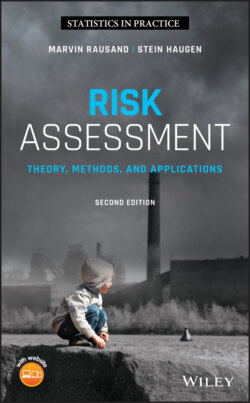Читать книгу Risk Assessment - Marvin Rausand - Страница 256
5.3.4 The MEM Principle
ОглавлениеMinimum endogenous mortality (MEM) is a German principle that uses the probability of dying of “technological facts” (e.g. sport, work, transport) as a reference level for risk acceptability. The principle requires that new or modified technological systems must not cause a significant increase of the individual risk for any person (Schäbe 2001). MEM is based on the fact that death rates vary with age and the assumption that a portion of each death rate is caused by technological systems (Nordland 2001).
Endogenous mortality means death due to internal or natural causes. In contrast, exogenous mortality is caused by the external influences of accidents. The endogenous mortality rate is the rate of deaths due to internal causes of a given population at a given time. Children between 5 and 15 have the MEM rate, which in Western countries is about , per person on average (EN 50126 1999). This means that, on the average, one in a group of 5000 children will die each year. The MEM principle requires any technological system not to impose a significant increase in risk compared to this level of reference.
According to the railway standard (EN 50126 1999), a “significant increase” is equal to 5% of MEM. This is deduced mathematically from the assumption that people are exposed to roughly 20 types of technological systems. Among these are technologies of transport, energy production, chemical industries, and leisure activities. Assuming that a total technological risk in the size of the MEM is acceptable, the contribution from each system is confined to
(5.3)
A single technological system thus poses an unacceptable risk if it causes the individual risk to be increased by more than 5% of MEM. It should be emphasized that this criterion concerns the risk to any individual, not only the age group that provides the reference value. Unlike ALARP and GAMAB, MEM offers a universal quantitative risk acceptance criterion that is derived from the MEM rate.
The MEM principle primarily relies on the technology principle as its basis, in that the criterion is related to existing risk levels.
